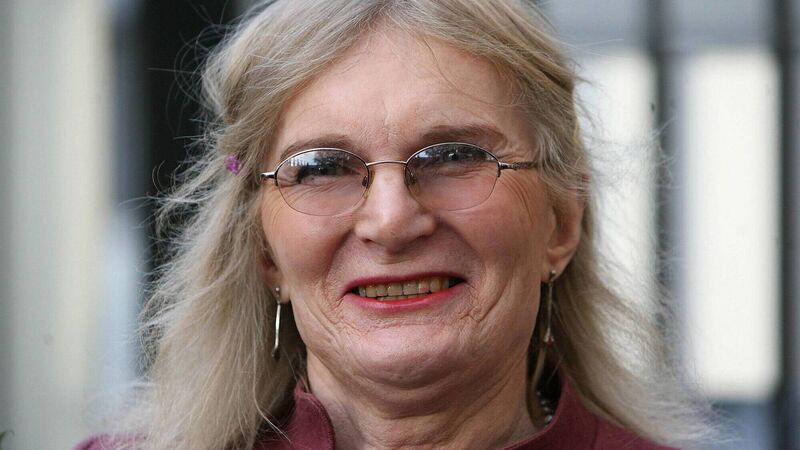Gender Recognition Act is a testament to Ireland's ability to cherish all our children equally

The roots of the campaign for legal gender recognition in Ireland can be traced back to the 1990s, when Dr Lydia Foy began her fight to have her legal gender recognised on her birth certificate. Picture: Niall Carson/PA Wire
This summer will mark six years of the operation of the Gender Recognition Act 2015 in Ireland. In recent months, the act has become the subject of intense debate, as much for its genesis as its contents.
In simple terms, the Gender Recognition Act allows for transgender persons to be legally recognised in their true gender through the issuance of a Gender Recognition Certificate. It operates on a system of self-declaration – there is no requirement for medical diagnosis or judicial approval before a certificate can be obtained.
To all intents and purposes, once a Gender Recognition Certificate has been issued, the person is legally of the gender they have declared.
Recent public commentary has given rise to allegations that the inception of the Gender Recognition Act was in some way rushed, underhand, or private, and that insufficient information of, and consultation with, the public was undertaken before its enactment.
Nothing could be further from the truth. In fact, the roots of the campaign for legal gender recognition in Ireland can be traced back to the 1990s, when Dr Lydia Foy began her fight to have her legal gender recognised on her birth certificate.
Dr Foy’s campaign, supported by the Free Legal Advice Centres, gave rise to two high-profile High Court cases in 2002 and 2007. The second of these cases, calling on binding case law from the European Court of Human Rights, established that the lack of legal gender recognition in Irish law rendered it incompatible with our Council of Europe obligations.
Although a government challenge to this decision was raised, it was subsequently dropped and successive Fianna Fáil and Fine Gael/Labour governments placed a commitment to transgender recognition in their programmes for government.
A working group was established to advise the government in 2011 and produced a well-publicised report, but the process stalled there. In 2013, following the threat of another High Court challenge from Dr Foy and her legal team, the government of the time produced a heads of bill.
This outline of legislation was debated at length by a Joint Oireachtas Committee, which issued a call for submissions and also held hearings with representative groups from the LGBTQ+ community as well as legal and medical experts.
It also received extensive debate in the Dáil and Seanad. The bill went through several iterations as a result of this discussion, starting out as a heavily medicalised, legally restrictive text, and gradually becoming less pathologised and less demanding of candidates for legal gender recognition.

Among the clauses which were removed were the requirement for candidates to have their applications assessed by a Gender Recognition Panel, including a doctor and public servants, and (following the marriage equality referendum), the ‘forced divorce’ requirement that candidates in opposite-sex marriages end them before they could be recognised.
It was recognised that these requirements were contrary to international human rights law, as elucidated in an article by Professor Michael O’Flaherty in 2015.
The bill was passed into law following the final Seanad debates in August 2015. It was lauded as one of the most progressive legislations of its kind in the world, granting the human right to recognition to a historically marginalised and silenced minority.
Insinuations that the recognition of transgender persons is somehow not Irish or that it was imported from elsewhere misrepresent the development of the Gender Recognition Act entirely.
The process was begun by an Irish woman, certified into law by an Irish judge, and debated and enacted by the Oireachtas following consultation with Irish people and organisations.
Indeed, in the Dáil debates, reference was made by TDs Patrick O’Donovan and John Lyons to the philosophical roots of equality law in the Proclamation of the Republic and the ideals of the 1916 Rising.
The Gender Recognition Act 2015 received a review from a government-appointed advisory group following public consultation in 2018. The review recommended that the act be amended to include recognition for non-binary persons and young people under the age of 16. The Government has not committed to act on either of these recommendations.
Transgender persons in Ireland are a tiny minority of the population whose voice has rarely been heard in national discourse. They are marginalised, denied access to healthcare, forced abroad to access medical procedures, and demonised in the press.
To be transgender in Ireland is to know yourself to be substantively unequal. In 2015, the Gender Recognition Act offered transgender persons a rare opportunity to be equal legal citizens, recognised for who they are.
At its foundation, our nation committed to cherishing all of its children equally. The Gender Recognition Act is a testament to our ability to do so, and it should be celebrated for that.













